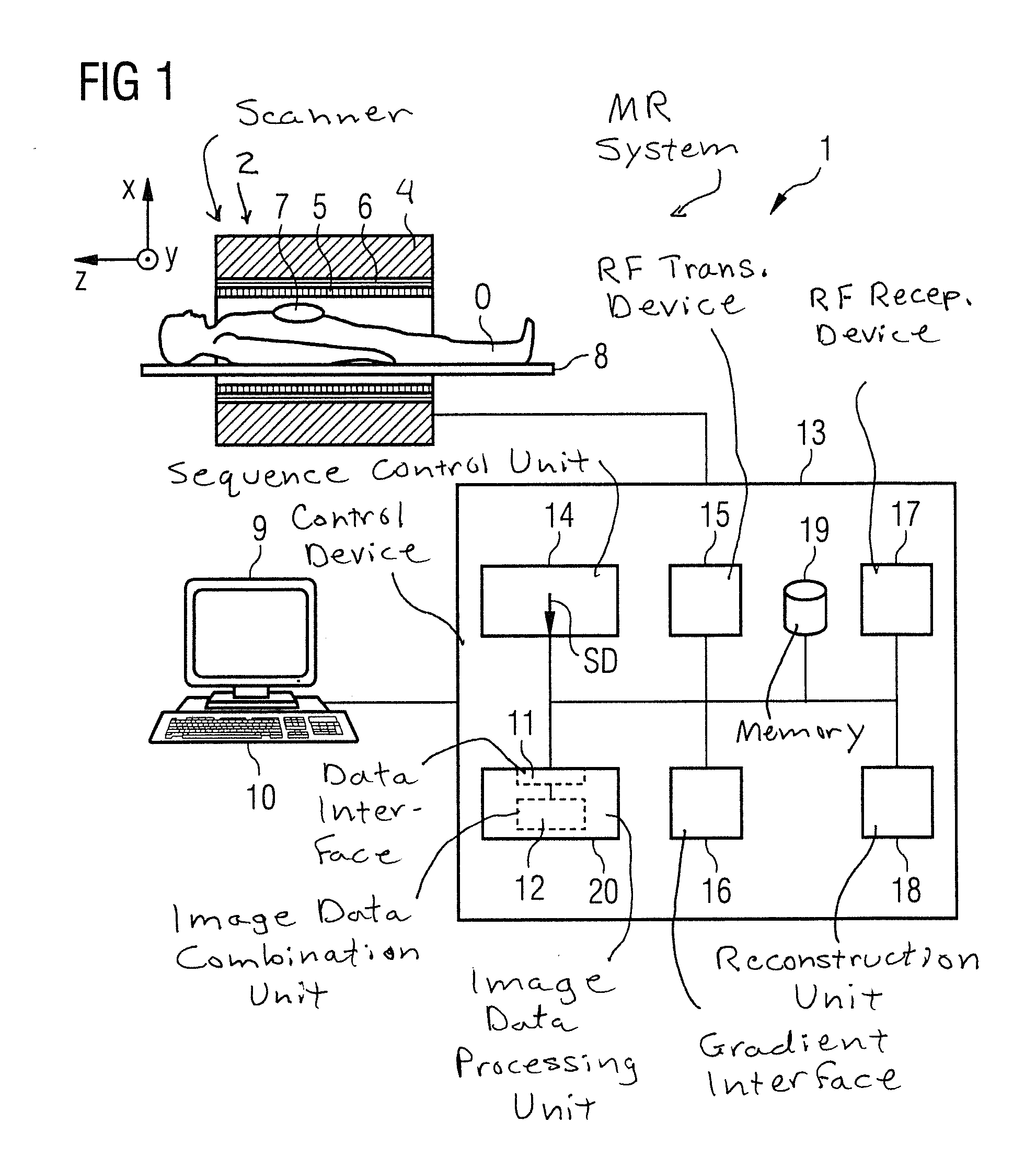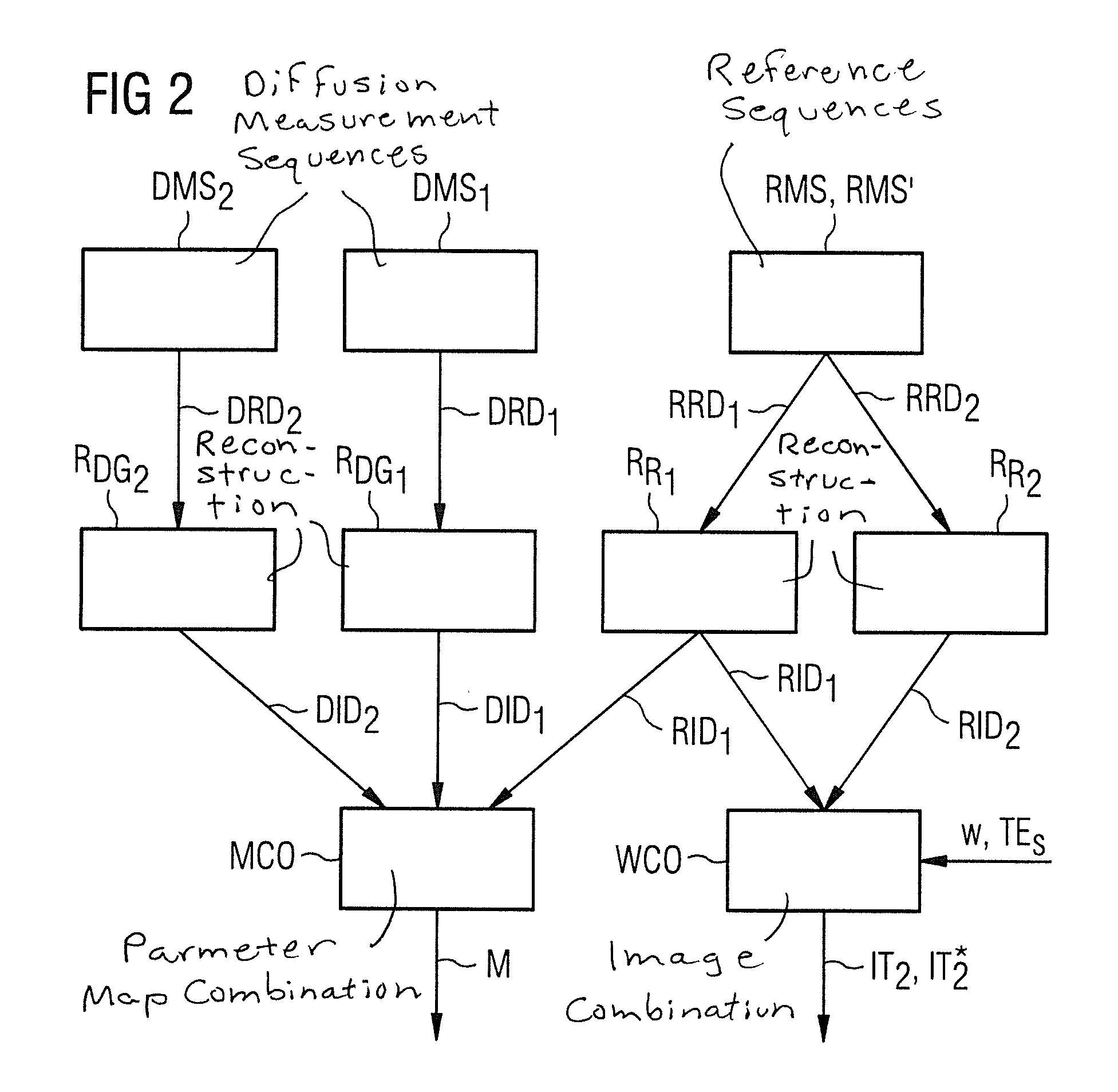Method to generate magnetic resonance exposures
a magnetic resonance and exposure technology, applied in the field of magnetic resonance exposure generation, can solve the problems of poor image quality and severe movement artifacts, and achieve the effect of effective and fast method
- Summary
- Abstract
- Description
- Claims
- Application Information
AI Technical Summary
Benefits of technology
Problems solved by technology
Method used
Image
Examples
Embodiment Construction
[0061]A magnetic resonance system 1 (abbreviated as an “MR system” in the following) according to the invention is shown in a roughly schematic manner in FIG. 1. The system 1 includes the actual magnetic resonance scanner 2 with an examination space 3 or patient tunnel into which an examination subject O (here a patient or test subject in whose body the examination subject—a defined organ, for example—is located) on a bed 8 can be introduced.
[0062]The magnetic resonance scanner 2 is typically equipped with a basic field magnet system 4, a gradient system 6, and an RF transmission antenna system 5 and an RF reception antenna system 7. In the shown exemplary embodiment, the RF transmission antenna system 5 is a whole-body coil permanently installed in the magnetic resonance scanner 2, in contrast to which the RF reception antenna system 7 includes local coils to be arranged on the patient or test subjects (symbolized only by a single local coil in FIG. 1). However, in principle the wh...
PUM
 Login to View More
Login to View More Abstract
Description
Claims
Application Information
 Login to View More
Login to View More - R&D
- Intellectual Property
- Life Sciences
- Materials
- Tech Scout
- Unparalleled Data Quality
- Higher Quality Content
- 60% Fewer Hallucinations
Browse by: Latest US Patents, China's latest patents, Technical Efficacy Thesaurus, Application Domain, Technology Topic, Popular Technical Reports.
© 2025 PatSnap. All rights reserved.Legal|Privacy policy|Modern Slavery Act Transparency Statement|Sitemap|About US| Contact US: help@patsnap.com



